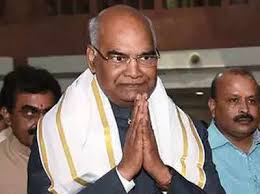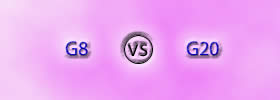Difference between President and Prime Minister of India
Key difference: President of India is the formal head of the executive, legislature and judiciary of India and is the commander-in-chief of the Indian Armed Forces. The Prime Minister of India is the chief of government, chief advisor to the President of India, head of the Council of Ministers and the leader of the majority party in parliament.
include("ad4th.php"); ?>
 The Government of India is considered to be a Sovereign Socialist Secular Democratic Republic and such is the largest democracy in the world. The parliamentary government has both a President and a Prime Minister. However, their roles differ vastly. According to the Constitution of India, the President is the head of the State, the first citizen of India and the Constitutional head. The President appoints the Prime Minister for help in the administration of the affairs of the executive.
The Government of India is considered to be a Sovereign Socialist Secular Democratic Republic and such is the largest democracy in the world. The parliamentary government has both a President and a Prime Minister. However, their roles differ vastly. According to the Constitution of India, the President is the head of the State, the first citizen of India and the Constitutional head. The President appoints the Prime Minister for help in the administration of the affairs of the executive.
The President of India is the chief executive and the head of the State, as well as the supreme commander of all three of the country’s armed forces. The President is the formal head of the executive, legislature and judiciary of India. The President serves a term of five years and is elected by the members of the Parliament of India and the state legislatures. The Vice-President is elected by a direct vote of all elected members of the Lok Sabha and Rajya Sabha.
According to the Constitution of India, the Prime Minister is the chief of government, the chief advisor to the President of India, the head of the Council of Ministers and the leader of the majority party in parliament. The Prime Minister leads the executive branch of the Government of India. He is the senior member and the chairman of the cabinet and such can select and dismiss other members of the cabinet. He allocates posts to members within the Government and is responsible for bringing legislation proposals. The cabinet is dissolved in the event of the resignation or death of the Prime Minister.
include("ad3rd.php"); ?>
 The Council of Ministers takes all decisions, makes appointments, and signs all treaties in the name of the President of India. The President signs all the bills passed in the Parliament before they become law. However, he cannot reject them but may ask the Parliament to reconsider them. The President is also responsible for all ceremonial functions. He has to be kept updated about all the crucial matters of the nation by the Council of Ministers. The President also has the right to give amnesty to prisoners and declare a national state, or financial emergencies. State emergencies are also called “President’s rule”.
The Council of Ministers takes all decisions, makes appointments, and signs all treaties in the name of the President of India. The President signs all the bills passed in the Parliament before they become law. However, he cannot reject them but may ask the Parliament to reconsider them. The President is also responsible for all ceremonial functions. He has to be kept updated about all the crucial matters of the nation by the Council of Ministers. The President also has the right to give amnesty to prisoners and declare a national state, or financial emergencies. State emergencies are also called “President’s rule”.
Further differences among the President and the Prime Minister are:
|
|
President of India |
Prime Minister of India |
|
Style |
President (Within India) His Excellency (Outside India) |
Mr. Prime Minister |
|
Residence |
Rashtrapati Bhavan |
Panchavati, |
|
Role |
The head of state of the Republic of India. |
The chief of government, chief advisor to the President of India, head of the Council of Ministers and the leader of the majority party in parliament. |
|
Leads |
The executive, legislature and judiciary of India. |
The executive branch of the Government of India. |
|
Responsibility |
The formal head of the executive, legislature and judiciary of India and is the commander-in-chief of the Indian Armed Forces. |
He is the senior member of cabinet in the executive branch of government in a parliamentary system. The prime minister selects and can dismiss other members of the cabinet; allocates posts to members within the Government; is the presiding member and chairman of the cabinet and is responsible for bringing proposal of legislation. |
|
Appointment |
Elected from a group of nominees, by the elected members of the Parliament of India (Lok Sabha and Rajya Sabha) as well as of the state legislatures (Vidhan Sabhas). |
Appointed by the President to assist in the administration of the affairs of the executive. |
|
Term length |
Five years (renewable) |
The Prime Minister is by convention the leader of the victorious party. No term limits are imposed on the office. |
|
Eligibility |
A President must be:
Cannot hold any office of profit under the Government of India. |
A Prime Minister must be:
Cannot hold any office of profit under the Government of India. |
|
Inaugural holder |
Rajendra Prasad 26 January 1950 |
Jawaharlal Nehru |
|
Formation |
Indian Constitution 26 January 1950 |
Indian Constitution |
|
Annual salary |
Rs. 18 lakh |
Rs.16.2 lakh |
|
Removal |
Term End, Impeachment, for violation of the Constitution of India. |
Change in the majority of Parliament. |
Image Courtesy: wittysparks.com, updatemart.com









Comments
Gulshan Kumar
Thu, 03/08/2018 - 07:19
ABDUL JABBAR
Tue, 01/17/2017 - 17:17
Martins Emmanuel
Sat, 10/01/2016 - 15:46
Thanks I m cleared with the difference
janetta
Tue, 02/24/2015 - 20:56
Is president nominal or constitutional head? What's the reason?
Mona
Sat, 01/31/2015 - 20:07
Name of the prime minister is wrong...its Narendra Modi now
Rahul
Mon, 01/26/2015 - 16:40
DUMBASS
Fri, 12/29/2017 - 05:42
thanks alot ,after reading this all my confusion are gone.
Nengpy
Wed, 10/15/2014 - 13:23
Add new comment